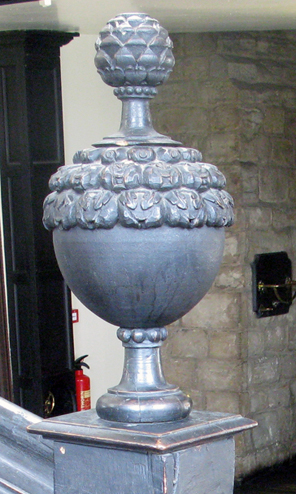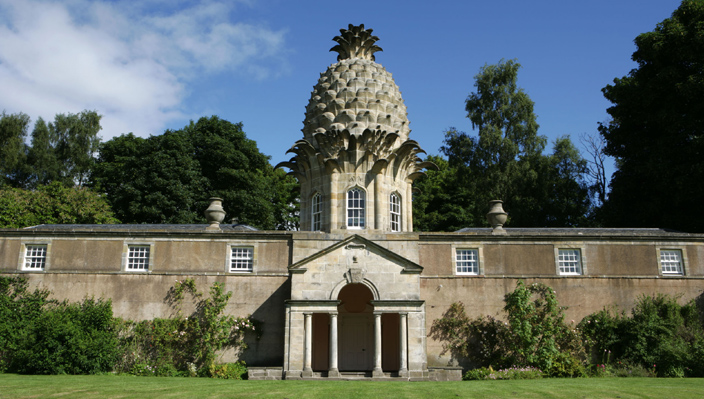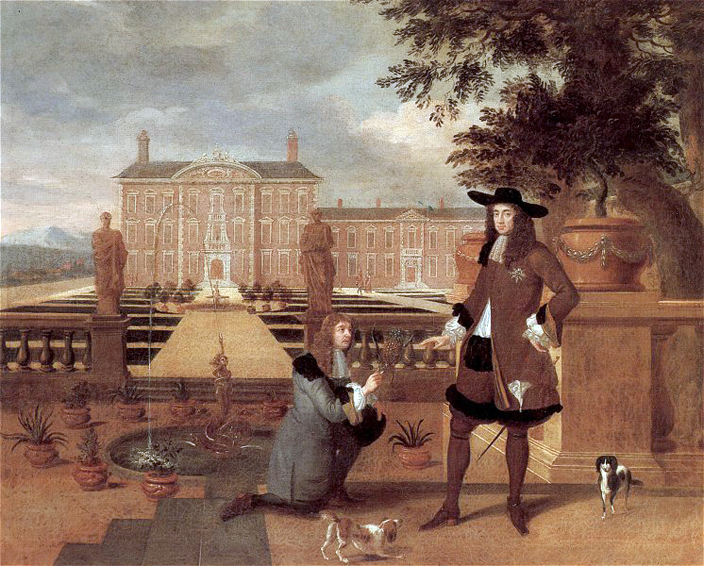
Detail of the Black Staircase of Durham Castle. The pineapple here has lost its leaves, but its prominence as the centrepiece of a bowl of fruit makes it easy to see that it was valued.
© Jeffrey Veitch
The finials on the Castle’s Black Staircase are representations of pineapples – probably carved by somebody who had not had the luxury of seeing a real one!
Unlike today, the pineapple was a rare and exotic fruit in the seventeenth century. The first European known to have come across them was Christopher Columbus who saw them on the Caribbean island of Guadeloupe in 1493, and brought some back to Europe, then a place where sugar and sweets were very uncommon.
The pineapple remained an exotic, extremely expensive rarity in Europe for over two centuries. Much prized, it was often the centrepiece of table displays. In fact, people who could not afford to serve pineapples could rent them, use them as a centerpiece, and give them back after their banquet was over. Because of its value and novelty, the pineapple was commonly represented in art and architecture.

The Dunmore Pineapple, Scotland, a summerhouse built for the fourth Earl of Dunmore in 1761, indicates just how exotic a fruit the pineapple was. The building, now owned by the National Trust of Scotland and managed by the Landmark Trust, is rented out as a holiday cottage.
© Angus Bremner, The Landmark Trust
The Pineapple in British Art and Architecture
Two of the most telling examples of the status of the pineapple are an official painting of King Charles II receiving the first British-grown pineapple from the royal gardener, (dated 1675) and the Dunmore Pineapple, a garden retreat constructed in the grounds of Dunmore House in Scotland in 1761, featuring a 14 metre high carved stone pineapple on the top of the building. Find out more about the pineapple in art and architecture.

A seventeenth-century painting of King Charles II receiving the first pineapple ever to be grown in Britain from his gardener. The depiction of the scene is a reflection of just how important an event it was.

